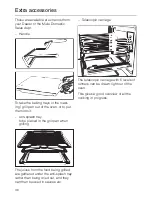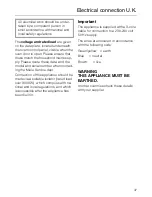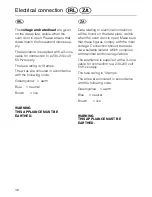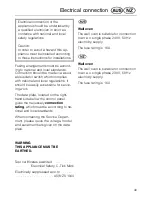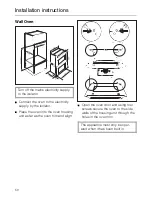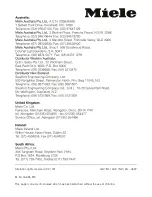
Correcting minor faults
. . . no noise is heard when the oven
door is opened during operation
This is not a fault.
If the door is opened during operation,
the door contact switch causes the
oven heating, and the fan if on “Fan
Heat
D
” setting, to be switched off.
. . . a noise is heard after a baking,
roasting or grilling process
This is not a fault.
The cooling fan continues to run for a
short time. When the temperature has
fallen sufficiently the fan switches off
automatically.
. . . the cakes and biscuits are not
cooked after following the times
given in the chart
Check whether,
the correct temperature was set.
there has been a change to the
recipe. The addition of more liquid or
more eggs makes a moister mix
which would need longer to cook.
the roasting filter had been left in
place in front of the fan when cook-
ing with “Fan Heat
D
”. In this case
baking times might be lengthened
by 10 to 15 minutes.
. . . the cake or biscuits are unevenly
browned
There will always be a slight uneven-
ness. Product information sheets give a
percentage results for standard brown-
ing tests. These refer to results for one
tray.
If the item being baked is browning
very unevenly, check:
– Baking with the “Fan Heat
D
” set-
ting:
whether the temperature was set too
high,
whether the roasting filter was in
place.
– Baking with “Conventional
A
” heat-
ing.
check the colour and composition of
the baking tins being used. Light col-
oured, shiny, or thin walled tins are
less suitable.
. . . spots like rust appear on the inte-
rior walls
When roasting on the rack, the circulat-
ing air sometimes picks up spices,
which are then deposited on the oven
interior walls. Such residues are not
removed by catalytic cleaning, they are
best removed while fresh with a mild
washing up liquid solution and a soft
brush.
44
Summary of Contents for H 213 B2
Page 4: ...Description of the appliance H 213 B2 4 ...
Page 51: ...51 ...

















